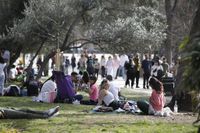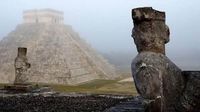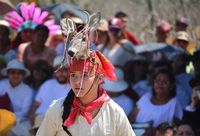The arrival of the spring equinox on March 20, 2025, at 10:02 AM GMT marks a significant celestial event that heralds the beginning of spring in the Northern Hemisphere. This astronomical phenomenon occurs when day and night are nearly equal in length, a moment many cultures around the world celebrate for its symbolic meaning of renewal and balance.
In 2025, the spring equinox officially begins in Mexico at 3:01 AM Central Time, as noted by the National Institute of Astrophysics, Optics and Electronics. As spring initiates a season of growth, it will continue until June 21, 2025, when summer takes its place. With the lengthening of days, this period is characterized by warmer temperatures and longer daylight hours.
One of the most captivating features of the equinox is its cultural significance, especially at historic sites like Chichén Itzá, where thousands gather to witness the unique visual phenomenon linked to the Maya civilization. During the equinox, sunlight casts shadows on the steps of the Temple of Kukulkán, creating the optical illusion of a serpent descending the pyramid, symbolizing the feathered serpent deity. "At Chichén Itzá, visitors can observe how sunlight creates a shadow on the steps of the Temple of Kukulkán, simulating the descent of the feathered serpent," various cultural sources state.
Accompanied by various festivals and traditions, the spring equinox is embraced resolutely in the region. It provides an opportunity not only for spiritual renewal but also for connection to nature. Celebrating these ancient traditions promotes an appreciation for the rhythms of the earth, cultivated over centuries.
This equinox will be observable from March 20 to March 23, with special events occurring at Chichén Itzá, making it an optimal time for visitors to experience the beauty and energy of this occasion. The site will open to guests from 8:00 am to 4:30 pm, allowing ample time to take part in the festivities and rituals honoring both nature and community.
For those interested in attending the celebrations, entry fees are set at 198 pesos for Mexican nationals and 671 pesos for foreign tourists. Additionally, another notable location is Teotihuacán, about an hour and a half from Mexico City, where a special operation will also be in place for visitors from March 21 to March 23. This archaeological site will welcome guests from 8:00 AM to 5:00 pm, with their last access allowed at 4:30 PM. The entrance fee to Teotihuacán is 100 pesos, and on Sunday, entrance is free for residents with proof of documentation.
As the seasons shift, the spring equinox not only offers celestial insight but beckons a renewed connection to cultural heritage. The dawn of spring is more than just a change in weather; it represents the beginning of new life and promise. On a practical level, with the transition into Daylight Saving Time occurring on March 30, 2025, clocks will spring forward, providing people with more daylight hours to enjoy this vibrant season.
The first full moon of spring is set to rise on April 13, 2025, and along with the equinox, it marks a time of reflection and intention setting. Many celebrate this period as an opportunity to create new goals aligned with the revitalizing energy of spring.
As individuals and communities prepare to embrace these cycles, one cannot overlook the lingering significance of the spring equinox. The beauty of this event lies not only in its scientific truths but also in its ability to inspire cultural gatherings, spiritual rituals, and renewed connections to our natural environment.
In summary, the spring equinox of 2025 is poised to be a profound moment for reflection, renewal, and celebration, drawing people together as they welcome the vibrancy of spring and the return of longer, brighter days. Whether at Chichén Itzá or other sites, this celestial event remains a cornerstone of both astronomical and cultural narratives.









